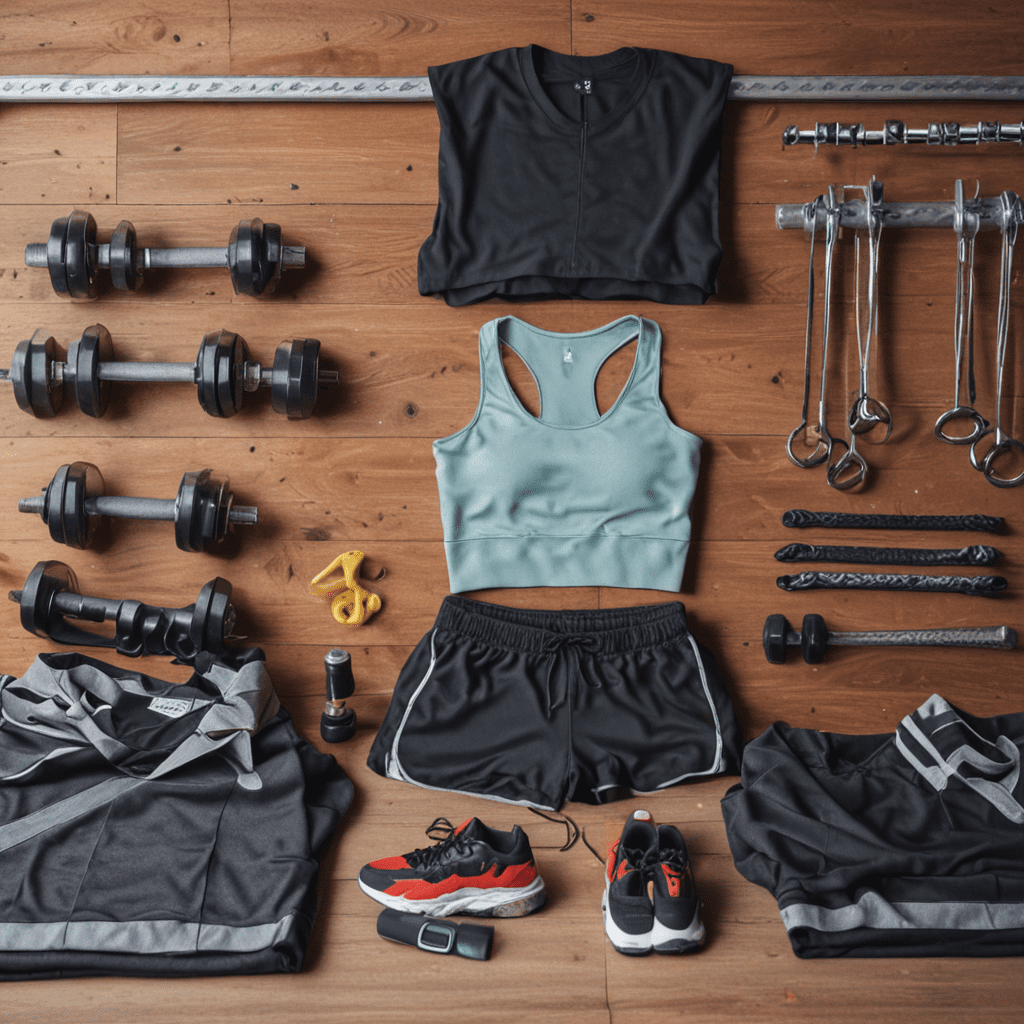
Pregnancy and Functional Training for Everyday Activities: An Outline
Benefits of Functional Training During Pregnancy
Functional training during pregnancy offers a multitude of benefits for both mother and baby. It can help:
- Maintain a healthy weight: Functional training burns calories and helps build muscle, which can help manage weight gain during pregnancy.
- Improve strength and endurance: Functional training exercises mimic everyday movements, which can help prepare your body for the physical demands of labor and delivery.
- Reduce back pain: By strengthening the core and other supporting muscles, functional training can help alleviate back pain, a common complaint during pregnancy.
- Boost mood and energy levels: Exercise releases endorphins, which have mood-boosting and energy-enhancing effects.
- Promote a healthy pregnancy: Functional training can help reduce the risk of gestational diabetes, preeclampsia, and other pregnancy-related complications.
Getting Started with Functional Training
Before starting any exercise program during pregnancy, it's essential to consult with your healthcare provider. They can advise you on appropriate exercises and modifications based on your individual needs and fitness level.
Here are some general tips for getting started with functional training during pregnancy:
- Start slowly and gradually increase the intensity and duration of your workouts.
- Listen to your body and stop if you experience any pain or discomfort.
- Stay hydrated by drinking plenty of water before, during, and after your workouts.
- Wear comfortable, supportive clothing and shoes.
- Find a workout buddy or join a pregnancy exercise class for motivation and support.
Modifications for Different Trimesters
As your pregnancy progresses, you may need to modify your functional training exercises to accommodate your changing body and needs. Here are some general guidelines:
- First trimester: Focus on low-impact exercises that don't put excessive strain on your joints. Examples include walking, swimming, and prenatal yoga.
- Second trimester: You can gradually increase the intensity and duration of your workouts. You can also start incorporating more weight-bearing exercises, such as squats and lunges.
- Third trimester: As your belly grows, you may need to modify some exercises or avoid them altogether. Focus on exercises that are comfortable and don't put strain on your back or abdominal muscles.
Safe and Effective Exercises
There are many safe and effective functional training exercises that you can do during pregnancy. Here are a few examples:
- Squats: Squats strengthen your leg and core muscles.
- Lunges: Lunges work your glutes, quads, and hamstrings.
- Push-ups: Push-ups strengthen your chest, shoulders, and triceps.
- Rows: Rows work your back, shoulders, and biceps.
- Planks: Planks strengthen your core and improve your balance.
Exercises for Specific Everyday Activities
Functional training can also help you prepare for specific everyday activities that you'll need to do after your baby is born, such as lifting and carrying your baby, bending over to change diapers, and pushing a stroller. Here are some exercises that can help you with these tasks:
- Bicep curls: Bicep curls help you lift and carry your baby.
- Overhead press: Overhead press helps you lift your baby over your head.
- Deadlifts: Deadlifts help you bend over to change diapers.
- Farmer's walk: Farmer's walk helps you push a stroller.
Importance of Core Strength
Strengthening your core muscles is essential during pregnancy and postpartum.
Your core muscles support your spine, pelvis, and abdominal organs. They also help you maintain good posture and balance. Strong core muscles can help reduce back pain, improve your balance, and make it easier to lift and carry your baby.
Here are some exercises that can help you strengthen your core muscles:
- Planks: Planks are a great way to strengthen your entire core. To do a plank, start on your hands and knees with your arms shoulder-width apart and your legs hip-width apart. Keep your back straight and your core engaged. Hold the position for 30 seconds to 1 minute.
- Bird dog: The bird dog exercise is a great way to strengthen your core and improve your balance. To do a bird dog, start on your hands and knees with your arms shoulder-width apart and your legs hip-width apart. Extend your right arm forward and your left leg back, keeping your back straight and your core engaged. Hold the position for 3 seconds, then return to the starting position. Repeat on the other side.
- Side plank: The side plank is a great way to strengthen your obliques and improve your balance. To do a side plank, lie on your side with your body in a straight line from your head to your feet. Rest your forearm on the floor and lift your hips off the floor, supporting your weight with your forearm and your feet. Hold the position for 30 seconds to 1 minute. Repeat on the other side.
Staying Active Throughout Pregnancy
It's important to stay active throughout pregnancy, even if you're feeling tired or uncomfortable. Exercise can help you maintain a healthy weight, improve your mood, and reduce the risk of pregnancy complications.
If you're not used to exercising, start slowly and gradually increase the amount of time you spend exercising each week. Aim for at least 30 minutes of moderate-intensity exercise most days of the week.
Here are some tips for staying active during pregnancy:
- Find an activity that you enjoy. If you don't enjoy the activity, you're less likely to stick with it.
- Listen to your body. If you're feeling pain, stop and rest.
- Stay hydrated. Drink plenty of water before, during, and after your workouts.
- Wear comfortable clothing and shoes.
- Warm up before your workout and cool down afterward.
Listening to Your Body
It's important to listen to your body during pregnancy. If you're feeling pain, stop and rest. Don't push yourself too hard.
Here are some signs that you may need to stop exercising:
- Vaginal bleeding
- Severe abdominal pain
- Dizziness
- Headache
- Chest pain
- Shortness of breath
- Swelling in your hands, face, or ankles
If you experience any of these symptoms, stop exercising and call your healthcare provider immediately.
When to Avoid Functional Training
There are a few situations in which you should avoid functional training during pregnancy. These include:
- If you have a high-risk pregnancy
- If you have any medical conditions that could be worsened by exercise
- If you are experiencing pain or discomfort
- If you are unsure about whether or not it is safe for you to exercise
If you are unsure about whether or not functional training is right for you, talk to your healthcare provider. They can help you decide if it is safe for you to exercise and can provide you with guidance on how to modify exercises to meet your individual needs.
FAQ
Is it safe to do functional training during pregnancy?
Yes, functional training is generally safe for pregnant women. However, it is important to talk to your healthcare provider before starting any exercise program during pregnancy. They can advise you on appropriate exercises and modifications based on your individual needs and fitness level.
What are some benefits of functional training during pregnancy?
Functional training can help you maintain a healthy weight, improve your strength and endurance, reduce back pain, boost your mood and energy levels, and promote a healthy pregnancy.
What are some modifications I can make to functional training exercises during pregnancy?
As your pregnancy progresses, you may need to modify some exercises or avoid them altogether. Some common modifications include avoiding exercises that put strain on your back or abdominal muscles, using lighter weights, and taking more breaks.
What are some exercises I can do to prepare for specific everyday activities after my baby is born?
Functional training can help you prepare for specific everyday activities, such as lifting and carrying your baby, bending over to change diapers, and pushing a stroller. Some exercises that can help you with these tasks include bicep curls, overhead press, deadlifts, and farmer's walk.
What are some signs that I should stop exercising during pregnancy?
If you experience any of the following symptoms, stop exercising and call your healthcare provider immediately: vaginal bleeding, severe abdominal pain, dizziness, headache, chest pain, shortness of breath, or swelling in your hands, face, or ankles.

